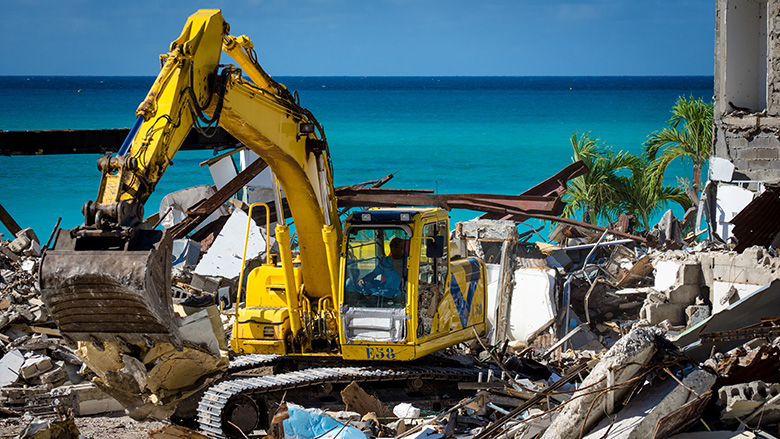Sint Maarten is a constituent country of the Kingdom of the Netherlands in the Caribbean. The country is 16 miles² (41 km²) and occupies the southern part of an island shared with the French overseas collectivity of Saint Martin. Spurred by economic development, the country’s population (estimated at 41,349 in 2024) has steadily increased over the past several decades, making Sint Maarten one of the most densely populated countries in the Caribbean.
Sint Maarten is highly vulnerable to natural hazards and adverse climatic events due to its location within the hurricane belt. In past decades, the country has been exposed to high winds and numerous hurricanes, including notably intense storms: Donna in 1960, Hugo in 1989, Lenny in 1999, Luis in 1995, and Irma, Maria, and Jose in 2017. Due to the small size of the country, a single storm has the potential to have a significant impact on the people, economy and environment. The country is vulnerable to high winds and rainfall that can lead to flooding and other damage. Coastal areas are prone to storm surges, rising sea levels and potential tsunamis. The country is also susceptible to earthquakes. These risks are compounded by urbanization, climate change, and capacity limitations.
The World Bank estimated damages in Sint Maarten from Hurricane Irma to be US$1.38 billion and losses about US$1.35 billion (about 129 and 126 percent of the Gross Domestic Product or GDP, respectively), affecting 90 percent of all infrastructure and large parts of the natural environment.
Sint Maarten’s economy is mainly tourism dependent. Restaurants, hotels, and other tourism-related sectors account for about 45 percent of the country’s GDP. Tourism accounts for 73 percent of foreign exchange income, creating employment for approximately one-third of the employed population. Sint Maarten primarily caters to cruise tourists, with the island’s only deep-water port in Philipsburg. About 80 percent of visitors to the island are short-stay cruise tourists.
Sint Maarten is recovering from two successive profound economic shocks. Severe damage to tourism-related infrastructure from Hurricanes Irma and Maria in September 2017 led to a sharp economic downturn in 2017 and 2018. The cumulative contraction of GDP in 2017 and 2018 is an estimated 12 percent. Economic activity started to recover in 2019, expanding by more than 10 percent, driven primarily by the reconstruction of damaged infrastructure, supported by private insurance payouts, an increase in domestic demand, and higher foreign exchange earnings from the return of tourism. Just as the country started to recover from the hurricanes, the onset of COVID-19 and the resultant lockdowns led to an even more significant downturn in economic activity due to strict containment measures and the overall impact of the pandemic on international tourism. Following a deep contraction in 2020, where economic activity declined by nearly 18 percent, there was an economic rebound of 8.2 percent in 2021 and an estimated 5.8 percent in 2022, led by a strong revival in stay-over tourism.
Sint Maarten’s GDP is unlikely to return to its pre-COVID and pre-hurricane levels until 2025. In 2023, GDP is expected to grow by 3.6 percent based on the assumption that cruise tourism will reach its pre-pandemic level of 1.6 million passengers. Reconstruction of the Princess Juliana International Airport will contribute to maintaining a substantial recovery in stay-over tourism and facilitate the expansion of homeporting, thereby contributing to above-average annual growth of about 3 percent in 2024/2025, with real output reaching its pre-pandemic and pre-hurricane level by 2025.
(Source: Sint Maarten Trust Fund Annual Report 2023)
Last Updated: Apr 11, 2024

